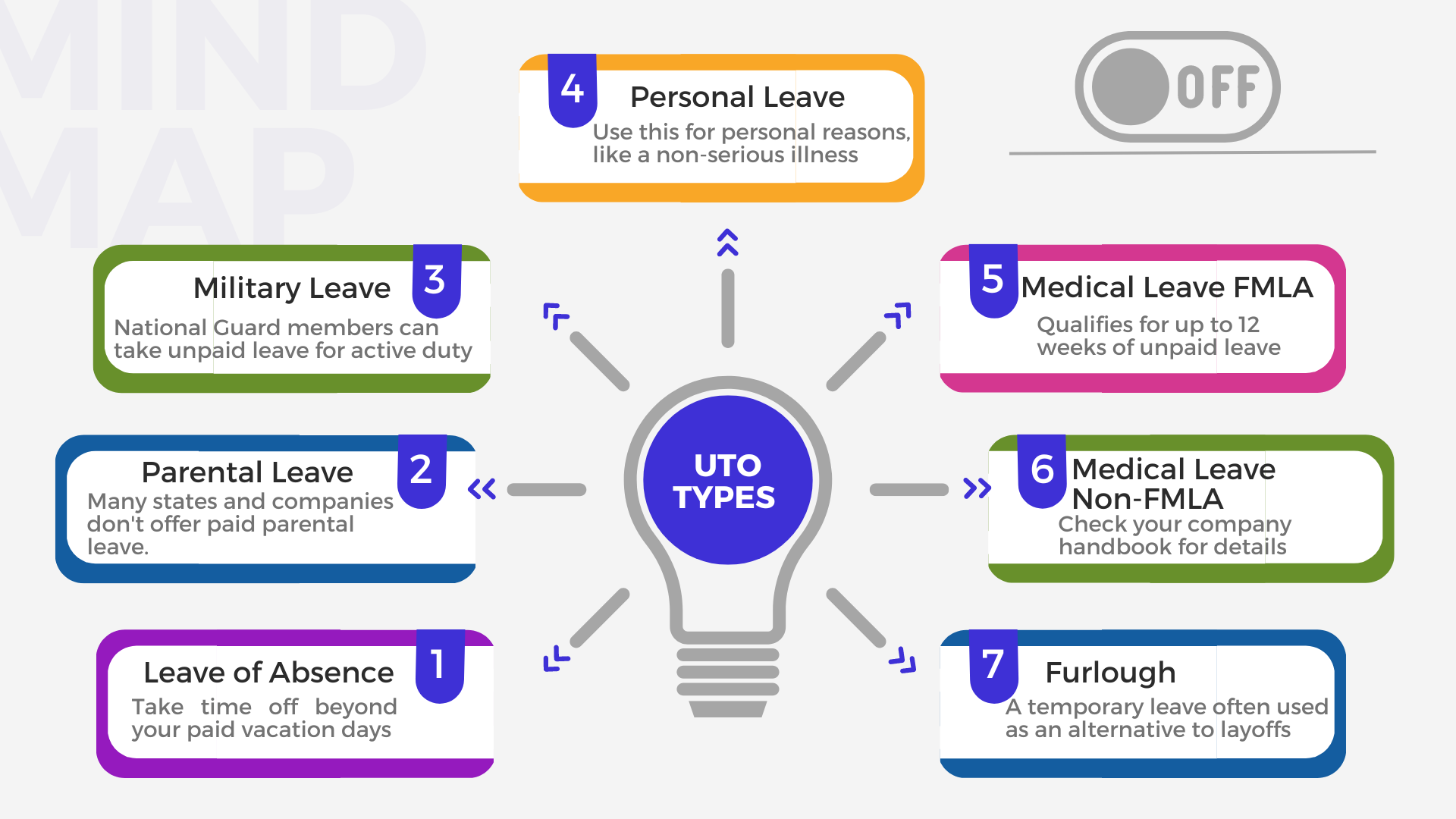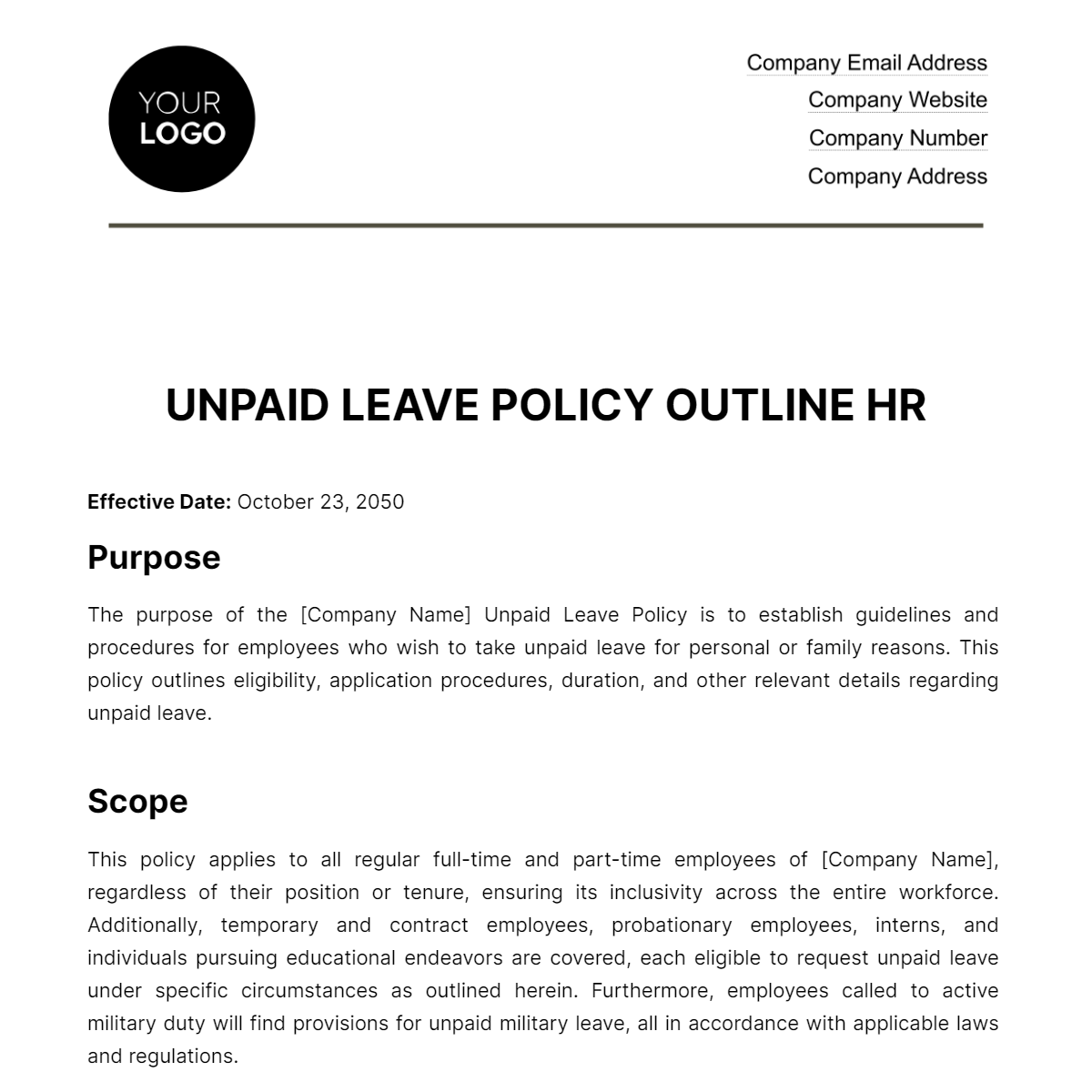Everything You Should Know About Unpaid Time Off
Unpaid time off can be a valuable benefit for employees, but there are important considerations to be aware of. Learn everything you should know about unpaid time off in this comprehensive guide.

While paid time off is undeniably important, unpaid time off (UTO) also deserves a place in the conversation.
Unpaid leave might seem counterintuitive, but it offers a surprising range of benefits for both employees and employers. Just remember, Rome wasn't built in a day—nor was it built during paid vacation time🏛️
What is Unpaid Time Off (UTO)?
Unpaid time off refers to absences from work that are not compensated by the employer.
Unpaid time off (UTO) differs from paid time off (PTO) such as vacation, sick leave, or personal days, where employees continue to receive regular pay.
Types of UTO
Unpaid time off is typically used when an employee needs to take time away from work for personal reasons that are not already accounted for in their benefits package.

- Leave of Absence: Take time off beyond your paid vacation days. Approval and terms vary by company.
- Parental Leave: Most states and companies don't offer paid parental leave. Explore disability benefits to get some income during this time.
- Military Leave: National Guard members can take unpaid leave for active duty while keeping their jobs.
- Personal Leave: Use this for personal reasons, like a non-serious illness, by taking reduced hours or unpaid days.
- Medical Leave (FMLA): Qualifies for up to 12 weeks of unpaid leave for serious medical needs for yourself or family (conditions apply).
- Medical Leave (Non-FMLA): Some companies offer unpaid medical leave outside of FMLA. Check your company handbook for details.
- Furlough: A temporary, unpaid leave where you may keep some benefits. Often used as an alternative to layoffs.
How Does Unpaid Time Off Work?
There are three main ways employees can receive unpaid time off.
1️⃣Unpaid Time Off Policy: Companies may offer a formal UTO policy to provide flexibility for employees. This policy outlines eligibility, procedures for requesting time off, and the number of days allowed.
2️⃣Family and Medical Leave Act (FMLA): As mentioned above, this federal law guarantees eligible employees up to 12 weeks of unpaid leave per year for specific reasons like childbirth, family illness, or serious personal health conditions.
3️⃣Furlough: A furlough is a mandatory period of leave from work, typically implemented by companies during economic slumps as a cost-reduction measure. During a furlough, while employees do not receive their wages, they may still be entitled to maintain specific benefits such as healthcare coverage.
Legacy of Support: Family and Medical Leave Act
Under FMLA, eligible employees are entitled to take unpaid, job-protected leave for specified family and medical reasons with continuation of group health insurance coverage.
The FMLA is a federal law that guarantees certain employees unpaid leave for important family and medical reasons, without jeopardizing their job.
Who qualifies? Employees who've worked for a covered company (with 50 or more employees) for at least a year can take leave.
How much leave? Up to 12 weeks of unpaid leave are available within a 12-month period.
What are the reasons? You can take leave for:
- The birth or adoption of a child (and to care for them)
- A serious illness of your spouse, parent, or child (to care for them)
- Your own serious medical condition
The key points to remember
- The leave is unpaid, but your job is protected during your absence.
- You may be able to use accrued paid leave (sick time, vacation) alongside FMLA leave.
- Some states offer additional leave benefits beyond the FMLA.
Reasons to Have UTO
🏥 Medical reasons: UTO can be used to recover from illness, surgery, or other medical needs.
👪 Family emergencies: UTO allows employees to address unexpected family situations, such as caring for a sick child or parent.
🧍♂️ Personal needs: UTO can be used for personal reasons such as attending a wedding, dealing with a death in the family, or moving to a new home.
✈️ Travel and vacations: Employees can use UTO to go on vacations or personal trips.
🤝 Volunteering: UTO can be used to volunteer for a cause the employee cares about.
📚 Professional development: UTO can be used to pursue educational or professional development opportunities, such as attending conferences or workshops.
UTO Current Trends
Unpaid time off (UTO) is a common workplace practice, but it's undergoing some shifts.
- The rise of flexibility translated into the implementation of unlimited vacation policies.
- AI-powered tools can streamline requesting UTO and even suggest personalized leave options.
- More states are mandating bereavement leave, impacting unpaid leave policies.
Benefits of Offering Unpaid Time Off

- Work-life balance: Having access to UTO can help employees achieve a better work-life balance by giving them the flexibility to take time off when needed for personal matters.
- Mental health: UTO can be particularly valuable for addressing mental health concerns, as it allows employees time to de-stress, recharge, and avoid burnout.
- Family care: Employees can use UTO for family caregiving needs.
- Skill development: UTO can be used to pursue educational or professional development opportunities.
- Increased Employee Morale and Retention: When employees feel like they have the flexibility to take time off when needed, it can boost morale and satisfaction.
- Increased productivity: Studies have shown that employees who take breaks, even unpaid ones, return to work more focused and productive.
- Reduced Absenteeism: A clear UTO policy can discourage unauthorized absences.
Drawbacks of UTO
- No income: While taking unpaid leave, employees will not be receiving a paycheck.
- Job security concerns: Some employees may worry that taking unpaid leave will jeopardize their job security.
- Impact on benefits: Depending on the company’s policy, taking unpaid leave may impact health insurance or other benefits.
- Workload upon return: Employees may return to a heavier workload after taking unpaid leave.
- Usage rates: Companies may need to track how often unpaid time off is being used.
- Management: Managers need to plan for how to cover the workload of employees who are on unpaid leave.

UTO Policies
Companies are formalizing UTO policies to ensure fairness and clarity, providing guidelines on how and when employees can take unpaid leave.

- Company-specific rules: Companies may have their own specific rules about unpaid time off. These rules should be clearly outlined in a company policy handbook or document.
- Eligibility criteria: Policies will typically specify who is eligible for unpaid leave, such as full-time employees after a certain probationary period. Clearly define which employees are eligible for unpaid time off. This could be based on factors such as employment status (full-time vs. part-time), length of service, and job role.
- Application processes: The policy should detail the process for requesting unpaid leave, including how far in advance notice is required and what information needs to be submitted in the application.
- Approval processes: The policy should outline the approval process for unpaid leave requests, including who has the authority to approve or deny requests, and what factors are considered during the approval process.
- Leave duration: Policies will typically specify the maximum duration allowed for unpaid leave.
- Benefits continuation: The policy should clarify how unpaid leave will impact benefits, such as health insurance. Some companies may allow employees to continue coverage by paying the premiums themselves.
- Returning from leave: The policy should outline the process for returning from unpaid leave, including any required documentation or meetings.

Factors to Consider When Creating a UTO Policy
- Paid vs. Unpaid Time Off: Will you offer both PTO and UTO, or just one?
- Employee Eligibility: Will all employees be eligible for UTO, or will it be limited to certain groups (e.g., full-time employees)?
- Amount of Time Off: How many unpaid days can employees take per year?
- Request Process: How should employees request unpaid leave? How much notice is required?
- Approval Process: How will you determine whether to approve or deny UTO requests?
- Coverage During Absence: How will you ensure that the employee's workload is covered during their absence?
- Impact on Benefits: Will unpaid time off affect employee benefits like health insurance?
Additional Considerations
- Exempt vs. Non-Exempt Employees: Exempt employees (typically salaried) may have different UTO rules compared to non-exempt employees (typically hourly).
- State Laws: Certain states may have additional laws regarding unpaid time off.
UTO for Full-Time Employees
Full-time employees generally have better access to and clearer guidelines for unpaid leave compared to part-time employees. In particular, full-time employees are:
- more likely to get unpaid time off (UTO) as a benefit.
- may have a set policy outlining allowed days, request process, and approval conditions.
Periodically review and update the unpaid time off policy to reflect changes in laws, business needs, or feedback from employees.
Impact of Unpaid Time Off on Payroll and Benefits
Unpaid Time Off (UTO) can have a substantial and multifaceted impact on payroll calculations and employee benefits. Understanding these effects is crucial for both employers and employees.
Payroll Calculations for UTO
Reduction in Total Earnings
When employees take UTO, their earnings for the pay period are directly reduced, as they are not compensated for the time off.
Total Pay Calculations: The overall earnings for that pay period decrease, which can influence budgeting and financial planning for both employees and the organization.
Payroll Taxes: Lower earnings will lead to reduced withholdings for income tax liabilities. Specifically, payroll taxes such as Social Security and Medicare are calculated based on total wages, meaning that UTO periods can lead to lower contributions to these funds.
Overtime Calculations
For employees eligible for overtime pay, UTO can complicate the calculation of overtime hours.
In many jurisdictions, overtime is calculated based on total hours worked. If UTO reduces the total hours worked in a pay period, it may also reduce the number of hours eligible for overtime pay.
This can create discrepancies and confusion regarding payroll accuracy and employee compensation.

Impact on Taxes and Benefits
- Lower Income Tax Withholdings: Employees may find that their income tax withholdings decrease during periods of unpaid leave. This can affect their overall tax situation, potentially leading to larger tax bills at year's end if not properly managed.
- Social Security and Medicare Contributions: While these taxes are still collected based on actual earnings, the overall lower earnings during UTO may not impact the percentage withheld but will reduce the total amount contributed during that period.
Effects on Employee Benefits
The implications of UTO extend into the realm of employee benefits, where reduced earnings can impact eligibility and contributions.
- Health Insurance: Many employers tie health insurance benefits to employee status and earnings. For instance, if an employee's earnings fall below a certain threshold due to UTO, they may lose eligibility for employer-sponsored health insurance.
- Retirement Contributions: Retirement plans like 401(k) often base employer contributions on a percentage of employee earnings. If UTO significantly lowers an employee’s average earnings, it can lead to a reduction in employer matching contributions, affecting long-term retirement savings.
- Paid Leave Accrual: In some cases, UTO might affect how paid leave is accrued. For instance, if an employee is not accruing paid leave hours during UTO, this could lead to a future shortage of leave available for use.
Streamlining Unpaid Leave: How TMetric Enhances Unpaid Time Off Management

TMetric Time Tracker can streamline unpaid time off management for your organization in a few ways.
- Centralized Request and Approval System: TMetric eliminates the need for email chains or paper forms to request time off. Employees can submit requests directly through the app, and managers can review and approve, or deny them within the same platform.
- Time Off Tracking: TMetric allows you to track payroll and benefits including sick leave, vacation days, and personal time off. This ensures transparency and avoids confusion about balances.
- Time Off Calendar: TMetric offers a time off calendar that provides a clear view of upcoming absences. This helps managers anticipate staffing needs and avoid scheduling conflicts.
- Reduced Paperwork: TMetric automates much of the administrative burden associated with unpaid time off, saving time for employees and HR personnel.
Unpaid Time Off (UTO): Key Points
- Time Off Without Pay: UTO lets you take time off for personal reasons without penalty, even if you've used all your paid leave.
- Employer Discretion: Companies aren't legally required to offer UTO, but many do for the sake of employees' support.
- Leave Length: UTO can last days, weeks, or even years, depending on your agreement with your employer.
- Requesting UTO: You typically need to submit a written request outlining the start date, duration, and reason for your leave.
- Approval Process: Employers have the right to approve or deny UTO requests based on business needs. Employers can deny unpaid time off unless protected by specific laws or company policies.
- No Pay or Benefits: During UTO, you won't receive regular pay and may lose benefits like paid time off or retirement contributions.
- Job Security: UTO doesn't count towards your service time, but your job remains secure while on leave.
- Health Insurance: Employer-provided health insurance and social security are typically suspended during UTO.
- Reasons for UTO: UTO can be used for various personal needs like childcare, education, vacations, or medical issues not covered by other leave policies.
- Benefits for Employers: Offering UTO can improve employee satisfaction and loyalty, but it requires careful management and reliable tools to ensure productivity doesn't suffer.


